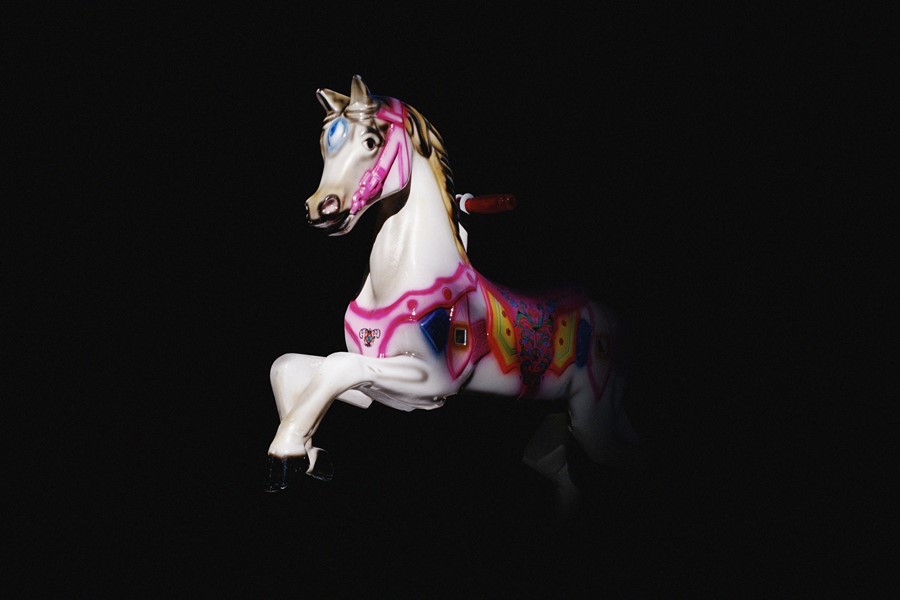Large doses of ket can be life-changing (and fun), but there are some risks with becoming so dissociated that you can’t move – here’s how to minimise them
While ketamine may be getting a new reputation as the antidote to depression and an elixir of choice for billionaires, there’s no denying that it (as with most drugs) is predominantly used by people looking to escape, at least for a little bit. Many people who take ket find themselves teetering on the edge of reality, moments away from dropping into the abyss of their minds, with no connection to the physical world.
As drug researcher and director of drugsand.me Ivan Ezquerra-Romano explains, a K-hole is “a state of profound disorientation and extreme detachment” – one of the main qualities of ketamine, which is classed as a dissociative drug. K-hole’s are characteristically similar to most psychedelic experiences, but due to ketamine’s sedative qualities, they often render users physically unresponsive despite experiencing vivid hallucinations.
While some people fall into the K-hole, others dive right in with the enthusiasm of Mr Krabs diving into a pile of dollars. The latter are often the types you’ll find musing about the “intuitive, associative ideasthesia” that is the K-hole on Reddit, or drop-kicking their friend’s fully grown Monstera plant at an afters. And while K-holes can be life-changing (or, at the very least, fun), there are some potential risks involved with becoming so dissociated that you can’t move – so if you’re going to K-hole, you might as well do what you can to minimise those risks. We asked Ezquerra-Romano exactly how to do that.
ENVIRONMENT IS EVERYTHING
As Ezquerra-Romano notes, “When you take ketamine, even at low doses, your motor coordination is impaired, so the more you take, the more impaired it becomes.” Whether it’s tripping over and getting injured or leaving yourself vulnerable to bad actors because you’ve lost the ability to move, there’s an element of physical vulnerability when it comes to K-holing.
For this reason, it’s important to make sure you’re in the right environment (the last place you want to K-hole is in a club’s smoking area) with people who you trust to look after you and not steal your phone. Ideally, there’ll be someone with you who isn’t K-holing who can act as a trip sitter.
PRE-PREP YOUR DOSE
Dosing correctly is important with any drug, but with ketamine it’s particularly important. While it’s rare for someone to die simply by taking too much ketamine, taking too much can cause nausea and vomiting (the last thing you need if you’re conked out on your back), spikes in blood pressure and breathing difficulties.
If you’re planning to K-hole, you’re already taking a significantly large dose of ketamine (according to Ezquerra-Romano, that looks like roughly 125 mg for people who are snorting the drug, and between 60 mg and 125 mg if you’re injecting). Because ketamine distorts your sense of time and space, it’s stupidly easy to take more than you planned, whether it’s because you’re not timing the doses correctly or because you’re taking bigger and bigger keys or lines the more intoxicated you become. “To avoid this, it’s crucial to measure and separate the dose beforehand,” says Ezquerra-Romano.
TRY NOT TO MIX IT
All those symptoms we mentioned – raised blood pressure and heart rate, nausea and vomiting, etc – are much more likely to occur when ketamine is mixed with another drug, like cocaine or alcohol. If you’re planning to take enough ketamine to K-hole, don’t bother mixing with anything else, it’s not worth it.
INTEGRATE YOUR EXPERIENCE
Well ketamine is often treated as a relatively unserious drug, it’s important not to underestimate the K-hole. Like any psychedelic experience, K-hole’s can be just as challenging as they are fun and insightful, so it’s important to look after yourself afterwards. “While challenging doesn’t always have to mean bad, because you can learn from a challenging experience, it can be traumatic,” says Ezquerra-Romano. “One practice that is considered very important in the following a psychedelic experience is integration.” Essentially, this refers to the steps you can take to apply the lessons you took from your trip in your day-to-day life.
While research on integration is growing, and you can access professional integration services if you feel it’s necessary, Ivan points to journaling and discussing your experience with friends as two of the most common methods.
DON’T DO IT TOO OFTEN
Finally, it’s important not to K-hole too often, especially if you tend to have challenging experiences every time, as you run the risk of becoming overwhelmed if you don’t have time to truly integrate and grapple with your previous trip. You could also become dependent on ketamine as a form of escapism. Not to mention, snorting a hefty amount of ketamine regularly could damage your nostrils or bladder, which nobody wants.




